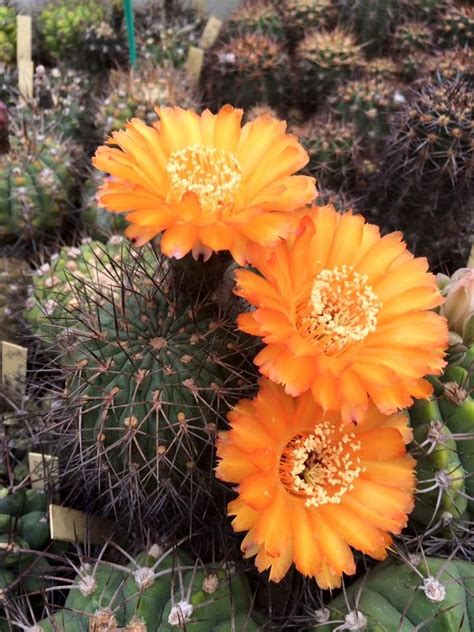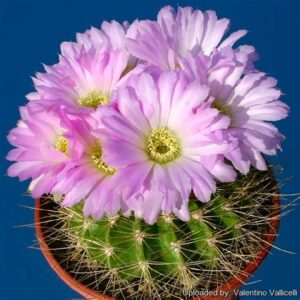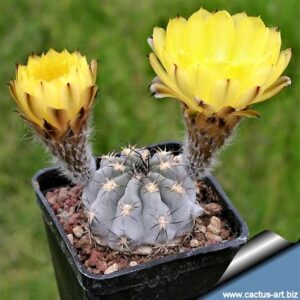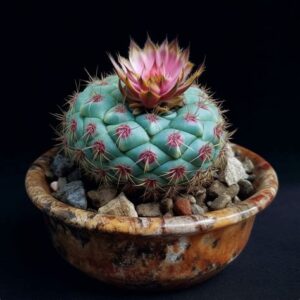Acanthocalycium aurantiacum, a mesmerizing member of the Cactaceae family, showcases its vibrancy through its stunning flowers and manageable size, making it an ideal choice for both novice and seasoned horticulturists. This article delves deep into the cold hardiness and care specifics for this captivating cactus, addressing key buyer concerns and ensuring an enriching read for potential owners.
The Acanthocalycium aurantiacum is commonly known for its spherical form and dramatic spines. Found predominantly in the semi-arid regions of South America, particularly Argentina, its aesthetic appeal is heightened during bloom when its blooms reveal shades of bright yellow and orange. This species presents both beauty and resilience, often attracting the attention of those seeking unique botanical specimens.
Understanding the requirements for optimal health and growth can alleviate concerns for those contemplating the purchase of this exotic plant. Cold hardiness, in particular, is a critical aspect that potential buyers must consider when introducing Acanthocalycium aurantiacum into their collections.
Cold Hardiness: Understanding the Limits
Cold hardiness, defined as a plant’s ability to withstand low temperatures without damage, is particularly significant for Acanthocalycium aurantiacum. Native to regions with fluctuating climates, this cactus exhibits a moderate tolerance to cold, but there are pivotal factors that determine its survival.
Typically, Acanthocalycium aurantiacum can endure temperatures down to approximately 20°F (-6°C). However, exposure to extreme cold for prolonged periods can result in frost damage, impacting both the plant’s structure and its overall vitality. To optimize care in cooler climates, growers should take advantage of protective measures.
In regions with harsh winters, the best course of action involves bringing the cactus indoors or placing it in a greenhouse. When indoors, it is advisable to position the cactus near a south-facing window where it can bask in adequate sunlight. Moreover, wrapping the pot in insulating material can help shield the roots from chilling temperatures.
It is crucial to recognize that while Acanthocalycium aurantiacum is relatively resilient to cold exposure, the key lies in transitional acclimatization. Gradually exposing the cactus to the outdoor environment in spring promotes robust health, as sudden shifts in temperature may induce shock.
Choosing the Right Location: Sunlight and Environmental Conditions
Acanthocalycium aurantiacum thrives best in areas that provide ample sunlight. Ideally, this cactus flourishes under direct sunlight for six hours each day. Inadequate light exposure may lead to etiolation – a phenomenon marked by elongated and weak growth. Therefore, selecting a suitable placement in a garden or home greenhouse is paramount.
Nevertheless, excessive sunlight can prove detrimental. In environments characterized by consistently high temperatures, providing partial shade, especially during the hottest part of the day, can prevent sunscald and desiccation. Light, well-draining soil is also essential to promote healthy root development; a mixture of cactus soil combined with sand or perlite is a recommended approach.
Watering Specifications: Striking the Right Balance
When it comes to watering Acanthocalycium aurantiacum, the principle of moderation is paramount. During the growing season, which typically spans from spring to early fall, regular watering is beneficial. However, it is essential to allow the soil to dry out between waterings to prevent root rot, a condition that can quickly compromise the plant’s vitality.
In the dormant season, usually fall and winter, the watering frequency should significantly decrease. Overwatering during this time may lead to detrimental consequences, including fungal infections and decay. Recognizing the difference between actively growing and dormant stages is critical for maintaining healthy Acanthocalycium aurantiacum.
Fertilization Needs: Nurturing Growth
Proper fertilization can significantly enhance the growth of Acanthocalycium aurantiacum. A balanced, diluted cactus fertilizer is ideal during the growing season. The application of fertilizer every four to six weeks can provide essential nutrients that support flowering and overall health. However, caution should be exercised to avoid excessive fertilization, which could lead to burned roots.
During the dormancy period, there is no requirement for fertilization. This pause allows the cactus time to conserve energy and prepare for the next active growth cycle. Adopting a patient approach with fertilization practices can yield significant benefits in the long run.
Pest Management: Safeguarding Against Invaders
Acanthocalycium aurantiacum, like many cacti, can fall prey to a variety of pests, including mealybugs, scale, and spider mites. Vigilance in pest management is essential for preserving plant health. Regularly inspecting plants and maintaining proper hygiene can help minimize infestations.
If an infestation occurs, appropriate measures should be taken. Insecticidal soap or neem oil are viable options that can effectively eliminate unwanted pests while being comparatively gentle on the plant. Persistent vigilance and preventive measures can result in a flourishing Acanthocalycium aurantiacum.
Repotting Practices: Encouraging Healthy Development
Repotting Acanthocalycium aurantiacum typically becomes necessary every few years or when the plant outgrows its current container. Timely repotting allows for fresh soil, enabling better drainage and reducing the risks associated with root-bound conditions.
The optimal time for repotting is during the active growth phase. When shifting to a new pot, selecting a vessel with drainage holes is crucial to prevent water accumulation, which can lead to rot. Handling the plant with care during this transition can prevent damage to the delicate spines and overall structure.
Conclusion: Cultivating Acanthocalycium Aurantiacum
Ultimately, Acanthocalycium aurantiacum represents an alluring addition to any cactus collection, particularly when equipped with the knowledge of its care requirements and cold hardiness. Addressing the challenges of cold tolerance, light, water, and pest management ensures this enchanting cactus thrives in both indoor and outdoor settings.
Potential buyers can rest assured that with proper care, Acanthocalycium aurantiacum can flourish, rewarding its caretaker with vibrant blooms and striking form year after year. For individuals seeking a stunning specimen that embodies resilience and splendor, Acanthocalycium aurantiacum is undoubtedly worth considering.





Leave a Comment